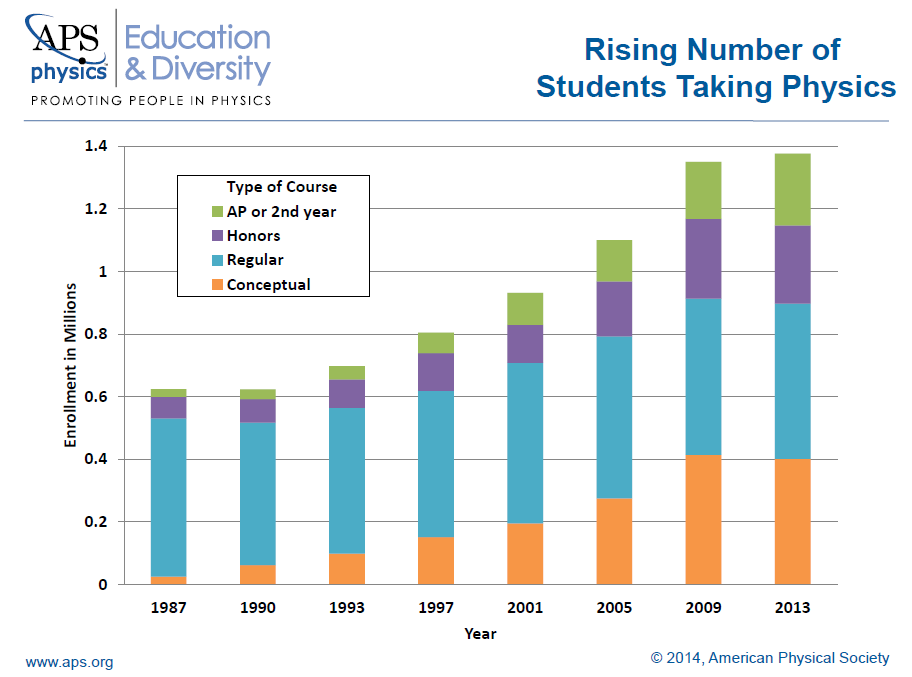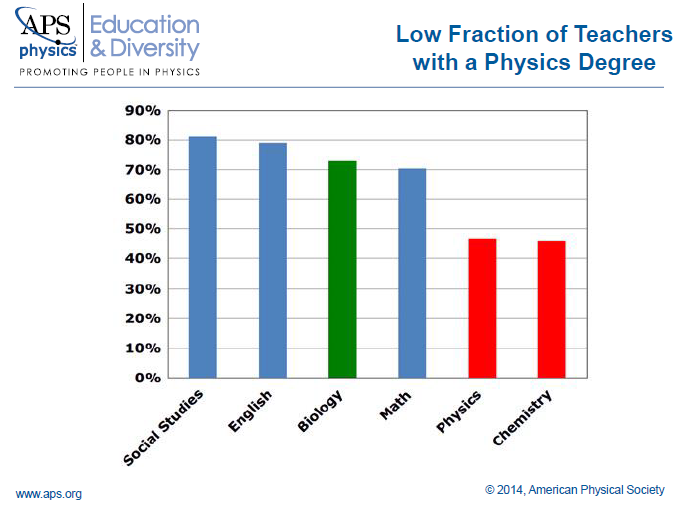There has probably never been a better time to enter the physics-teaching field. High school enrollments continue to climb and the percentage of high-school students taking physics is increasing. At the same time many “sputnik era” teachers are retiring.

Credit: U.S. Department of Education. Source: Jason G. Hill and Kerry J. Gruber, Education and Certification Qualifications of Departmentalized Public High School-Level Teachers of Core Subjects: Evidence from the 2007-08 Schools and Staffing Survey, Statistical Analysis Report [NCES 2011-317] (National Center For Education Statistics, U.S. Department of Education, Washington, D.C., 2011). Available at: http://nces.ed.gov/pubs2011/2011317.pdf.
There is a strong demand for well trained physics educators in high schools in New York and many other states. The graph below shows how few physics teachers are fully equipped with a bachelor's degree in physics compared to other fields of study.

Credit: AIP. Source: Susan White and Casey Langer Tesfaye, High School Physics Courses & Enrollments: Results from the 2012-13 Nationwide Survey of High School Physics Teachers (American Institute of Physics, College Park, MD, 2014). Available at: http://www.aip.org/sites/default/files/statistics/highschool/hs-courses-enroll-13.pdf
Physics teaching has a number of advantages over other science teaching fields. Since physics is usually optional, only the most motivated and mature students take it. In most schools you will be the only physics teacher (or one of two in very large schools), so you get to call your own shots more often as far as teaching style, course organization, and to some extent content. New York certification is usually easily transferred to other states.
Fredonia has a strong physics-education program (Physics Adolescence Education). These majors take a slightly-modified physics degree which differs only in small details from the standard BS in Physics program, together with education courses from the School of Education. These include three early field experiences and culminate in a semester of student teaching. A specialist in Physics Education, Dr. Michael Jabot from the School of Education (formerly a high-school physics teacher before obtaining his Ph.D. from Syracuse University), will guide you in both the Introduction to Education and Science Methods courses. The result is sound pedagogy on top of a sound content base.
For more information on this program please contact Dr. Justin Conroy, Chair, Physics Department, 716-673-3301, conroy@fredonia.edu .
